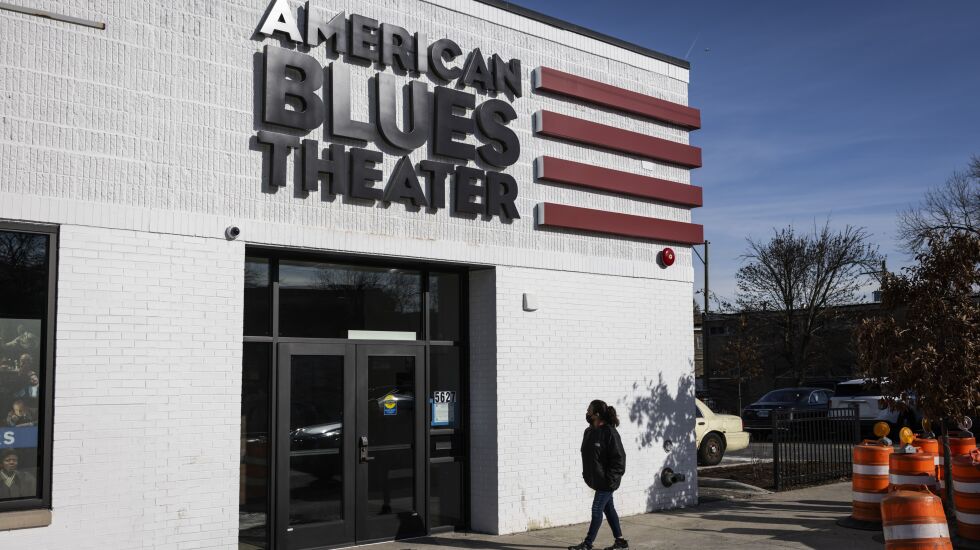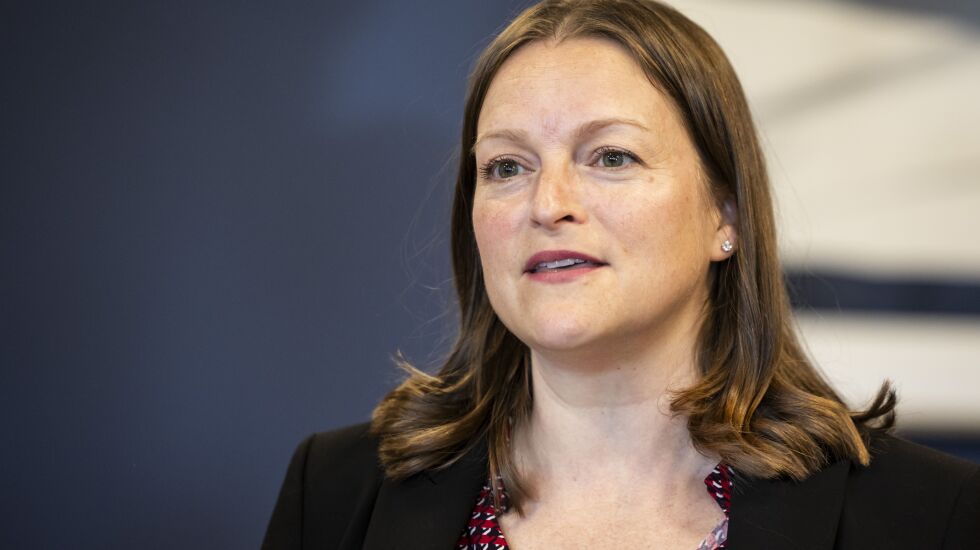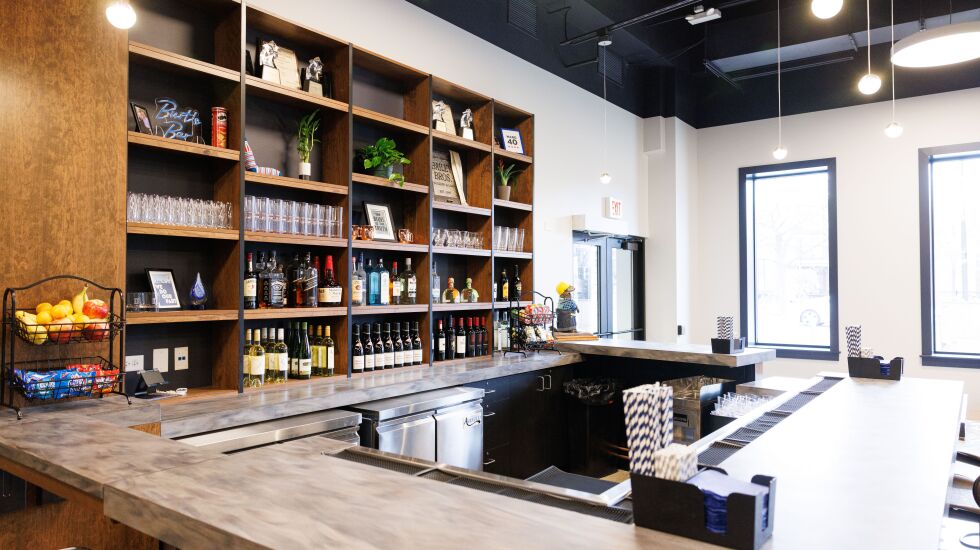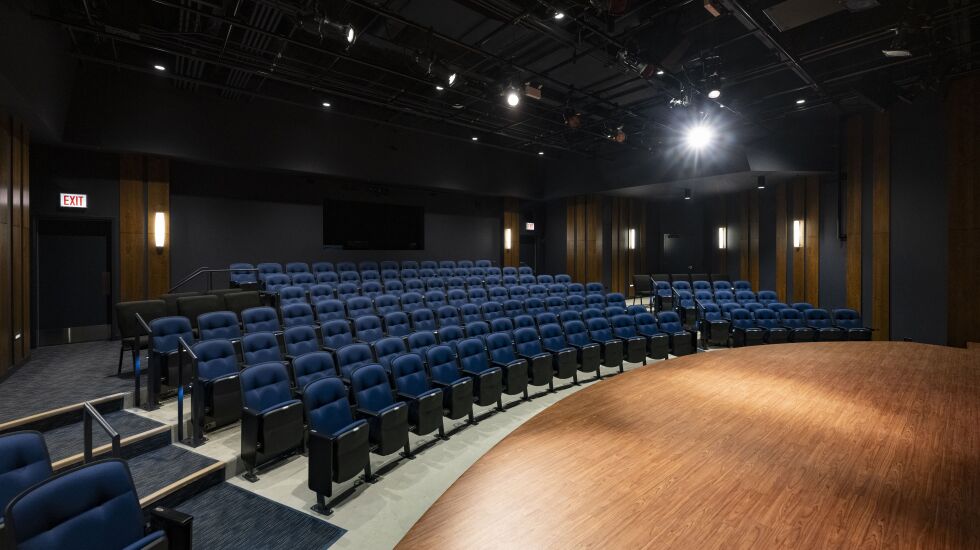
The arm of an excavator rotated into place, before dumping a bucketload of gravel into a gaping hole in front of the building.
The distant whine of a drill from somewhere inside the building poured out into the lobby.
Things were a little frantic Monday, as American Blues Theater prepared for the unveiling Tuesday of its new space in the West Ridge neighborhood — the company’s first permanent home in its 38-year history.
“I don’t look at anything as a difficulty,” said Gwendolyn Whiteside, 49, the company’s executive artistic director. “I’m looking at it as opportunities. The fact that this is our first home, everything is a blessing. So if there is a challenge, right now we still are looking at it like this is the best thing that ever happened to us.”

You can understand Whiteside’s excitement. The building — the former site of a dollar store and a Walgreens, doesn’t look like much from the outside — it still retains its boxy, unadorned exterior. But inside is a state-of-the-art, 137-seat proscenium theater, a 40-seat flexible rehearsal studio, a bar and multiple dressing rooms — among other features.
And even though workers were still on site Monday, the stage sparkled with Christmas trees, a menorah and other stage pieces in preparation for the the company’s 22nd annual production of “It’s a Wonderful Life: Live in Chicago!” based on the Frank Capra movie and directed by Whiteside.
She first saw the new space — empty and with water puddled on the floors — back in fall 2021.
Like a script before it’s fleshed out with actors, lights and props, Whiteside said she could imagine the possibilities. She also liked the building’s gritty past.
“American Blues is founded on the principles of working people. It’s a working-class theater. So the ethos of being in a building that was a working building like that — it makes perfect sense,” she said.
The Tony Award-winning company (the second-oldest Equity ensemble theater in the city) is dedicated to “producing new and classic American stories.”

Funding for the $7.8 million project, designed by Morris Architects Planners, came through the theater’s new Our First Home capital campaign, which included $6 million for the building purchase and construction within the existing footprint, and a $500,000 building reserve fund. To date, $4.2 million has been raised from individual donors.
Nick Santarelli, project executive, said it was tricky building a theater inside a structure that wasn’t designed for the arts.
“It looks like a square box, and then you come in here and not only do you have curves for the seating and shapes in the lobby that take you away from that square box, but having to coordinate all of that with an existing building that you have to live within the structure of is absolutely a challenge,” Santarelli said.

Since its founding in 1985, American Blues Theater has leased space in more than a dozen venues across the city.
“Every time you go into a new venue, you have to learn their operating system, you have learn their equipment, … their footprint of the stage, plus you have to learn their leadership,” Whiteside said.
And sometimes, you might have to cart your belongings out of the rented space in the middle of winter — during an ice storm, as has happened in the past, Whiteside said.
But on the plus side: “Because we have been in over 15 venues, we have a really good swath of institutional knowledge of what works for us. We were able to customize this [new space] exactly for our needs,” Whiteside said.

The theater is set open just weeks after Chicago’s Department of Cultural Affairs and Special Events (DCASE) released a devastating report, detailing a cultural arts scene in crisis due to dwindling audiences and subscriptions, increased operating costs coupled with shrinking budgets, declines in private funding and sponsorships, the end of government funding, as well as inflation, among other factors.
“Gosh, I don’t want to sound Pollyanna, but if you build it they will come. Isn’t it the whole idea that everyone needs story?” Whiteside said. “Certainly patrons might have different patterns than they had before the pandemic. But we’ve found that people are coming out to our programs.”








